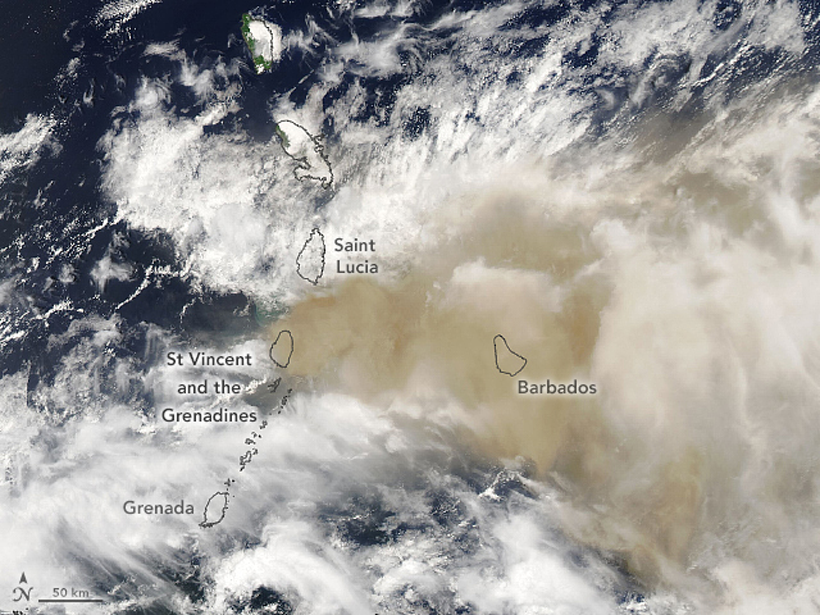Satellites in the sky combined with computers on the ground detect and track volcanic ash clouds, like those produced by Soufrière St. Vincent in April, in near-real time.

Satellites in the sky combined with computers on the ground detect and track volcanic ash clouds, like those produced by Soufrière St. Vincent in April, in near-real time.